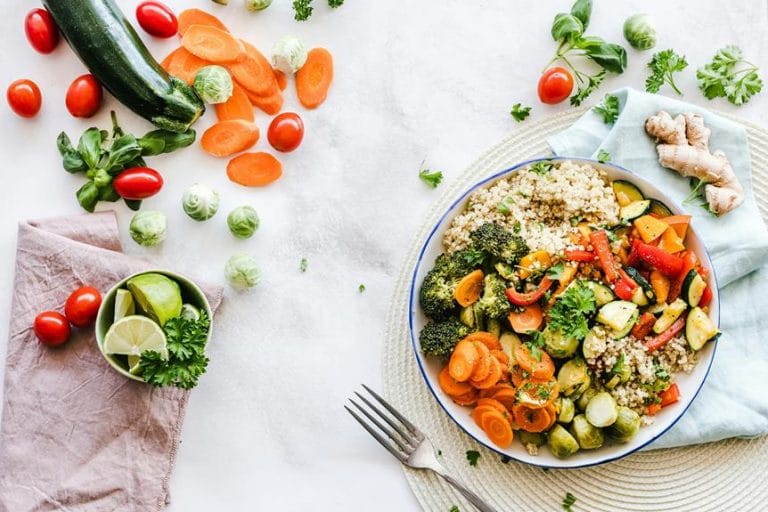Essential oils are popular, but are they sustainable? The truth is, it varies. Some contribute to habitat loss and energy-intensive production, while others are more eco-friendly. Understanding the nuances is key to making informed choices.
Let’s take a closer look at the sustainability of these aromatic wonders.
Key Takeaways
Key points on the sustainability of essential oils:
- The production of essential oils can have significant environmental impacts, such as habitat loss, biodiversity decline, and greenhouse gas emissions.
- Certain plant species used for essential oils, like spikenard and sandalwood, are threatened or endangered, raising concerns about their long-term sustainability.
- The energy-intensive distillation process used to extract essential oils contributes to their environmental footprint, but more efficient methods like hydrodistillation can help mitigate this.
- Sustainable farming practices, such as organic agriculture, crop rotation, and agroforestry, can improve the environmental sustainability of essential oil production.
- Some essential oils, like lavender, lemon, and eucalyptus, are considered more eco-friendly due to their renewable sources and sustainable harvesting methods.
Environmental Impact of Harvesting Plants for Essential Oils
The harvesting of plants for essential oil production can have a significant environmental impact, ranging from habitat loss and biodiversity decline to greenhouse gas emissions and soil degradation.
It’s kind of like cutting down a whole forest to get just a few drops of precious oil – not the most eco-friendly approach, if you ask me.
You see, when companies clear out natural habitats like tropical rainforests to grow their essential oil crops in monoculture plantations, they’re basically giving Mother Nature a big ole’ middle finger.
Bye-bye, diverse ecosystems and hello, barren fields of a single plant. And let’s not forget about the carbon that gets released into the atmosphere when they drain those pesky peatlands. Talk about a greenhouse gas party!
But it’s not all doom and gloom. Sustainable practices can help mitigate the environmental footprint of essential oil production. Why not use existing farmland instead of clearing new areas? And how about trying out some organic methods and integrated pest management to cut back on those nasty chemicals?
Plus, efficient distillation tech and mobile units can help save energy and water during the extraction process. It’s like having your essential oils and being eco-friendly too!
Threatened Species in Essential Oil Production
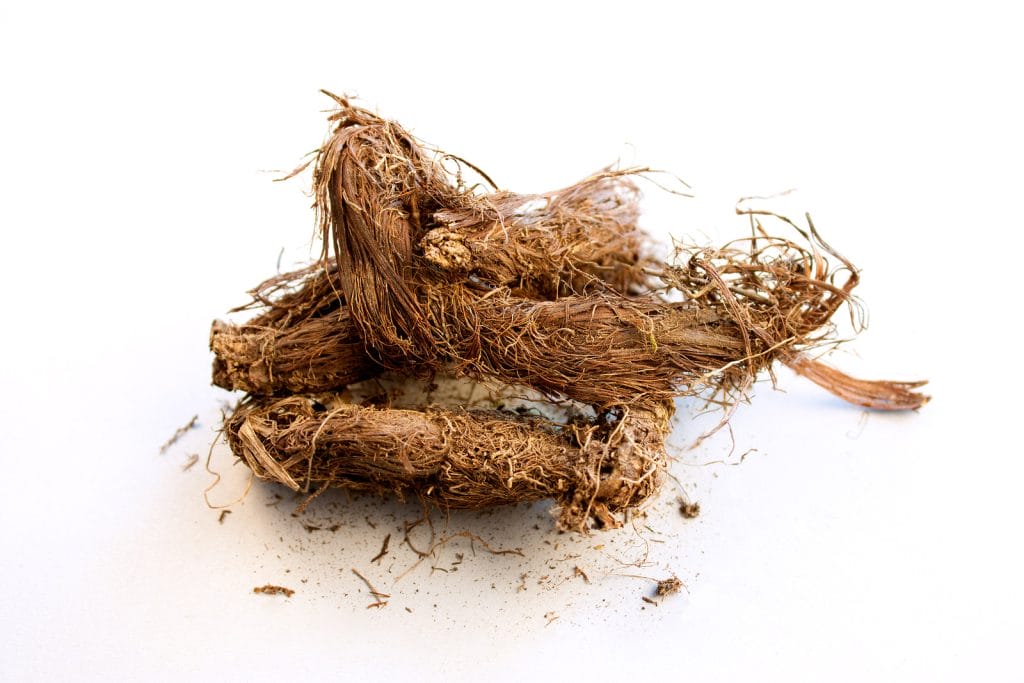
Unfortunately, several plant species used for essential oils are threatened or endangered due to overharvesting. Practices like deforestation, unsustainable harvesting, and monocropping have contributed to the declining populations of valuable aromatic plants, such as spikenard, frankincense trees, rosewood, atlas cedarwood, and sandalwood.
It’s a real shame to see plants that have been used for centuries suddenly on the endangered species list. Take spikenard, for example – its roots have been prized for essential oil production for thousands of years, but now the wild population is rapidly disappearing as demand skyrockets.
Frankincense trees aren’t faring much better, as their resin is being harvested at an unsustainable rate, causing ancient frankincense forests to slowly vanish.
Even some of the classics like rosewood, atlas cedarwood, and sandalwood are in trouble. These plants have been overharvested to the point that they’re now considered endangered. Can you believe it? These aren’t some obscure plants – they’ve been staples in the essential oil world for ages.
The good news is, there are ways we can turn this around. Sustainable harvesting practices, cultivating threatened species, and finding alternative plants could all help conserve these precious resources. But it’s going to take some effort from everyone who loves their essential oils.
Are you up for the challenge?
Energy Intensity of Essential Oil Distillation
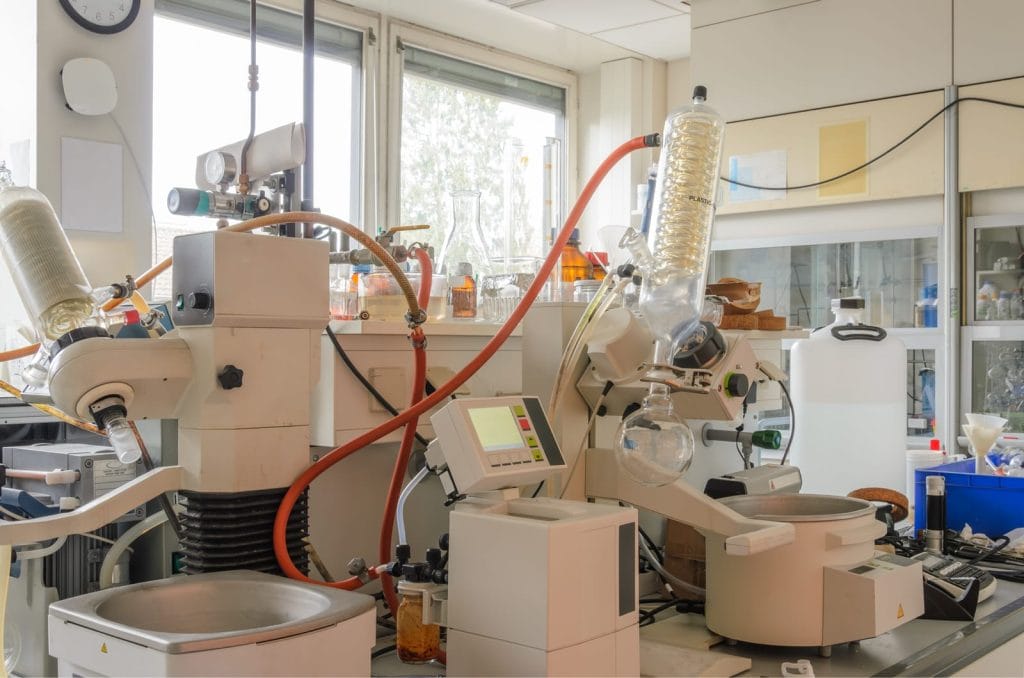
The distillation process of essential oils, particularly steam distillation, is an energy-intensive endeavor that demands significant resources. It’s as if you have to spend an entire morning cooking just to make a small bottle of essential oil – that’s how much energy and effort goes into it.
You see, to extract those precious aromatic compounds, the plant material goes through a steamy ordeal. Water is heated up to produce steam, which then passes through the plant, essentially ‘steaming’ out the good stuff.
But all that heating and steaming? It guzzles up a ton of energy – about 15 kilojoules per gram of lavender oil, to be precise. That’s even more than the hydrodistillation method, which is like the lightweight version of essential oil extraction.
Now, don’t get me wrong, steam distillation is the most common way to get those essential oils, and it works pretty darn well. But the energy-intensive nature of the process is a real drawback, driving up the overall cost of production.
Scientists are trying to find new ways to produce essential oils that use less energy. One example is the enzyme method. With this method, special substances (enzymes) are used to extract the oils from the plants.
This new enzyme method uses much less energy than the normal steam distillation method. But the oils produced with it are still of good quality, just as good as the oils made with the older steam distillation method.
So with this new enzyme method, we can make essential oils that are equally good, but with much lower energy consumption. That’s better for the environment and cheaper.
To make the distillation process more sustainable, factors like time, temperature, and plant material load need to be carefully optimized for each type of plant. It’s a delicate balance, but hey, essential oils are worth it – as long as we can keep the energy bill in check.
Sustainable Farming Practices for Essential Oils
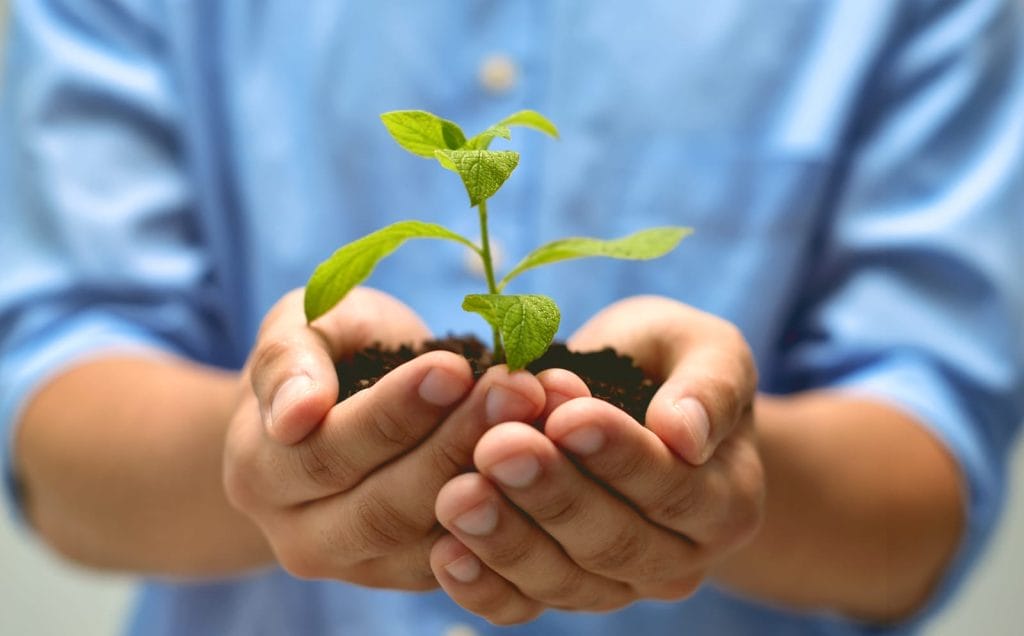
When it comes to essential oil production, environmentally-friendly and resource-efficient cultivation methods for aromatic plants are crucial. Fortunately, more and more growers are embracing sustainable practices to ensure the quality of their products and protect the environment.
Organic Cultivation
Instead of synthetic chemicals, organic growers rely on nature’s forces. With compost, bokashi, and other natural fertilizers, they keep the soil healthy and fertile. And rather than toxic insecticides, they implement biological pest control methods that work in harmony with nature. This way, you get delicious, pure essential oils while allowing Mother Nature to thrive.
Crop Rotation and Intercropping
By rotating crops and practicing intercropping, growers create a balanced ecosystem. This provides protection against diseases and pests, improves soil health, and increases biodiversity. Just like in nature, different plants work together for optimal growth and yield.
Water Conservation
With smart irrigation techniques like drip irrigation and rainwater harvesting, growers can significantly reduce their water consumption. Mulching helps the soil retain moisture, and recycling the distillation water prevents waste. Drop by drop, these methods deliver high-quality oils while using less water.
Integrated Pest Management
Instead of chemical pesticides, sustainable growers rely on natural pest control. Using beneficial insects, pheromone traps, and botanical insecticides, they keep pests under control in a safe and environmentally-friendly way.
Sustainable Distillation
Modern solar or biomass-powered distillation facilities greatly reduce CO2 emissions. Every drop of essential oil is produced in an energy-efficient, green manner.
Agroforestry
In agroforestry systems, shrubs and trees grow together with the aromatic plants. This promotes biodiversity, keeps the soil fertile, and creates a self-sustaining ecosystem, just as nature intended. By designing these diverse agricultural landscapes with native plants, growers create synergistic interactions that enhance pest management, soil health, and water efficiency.
Fair Trade
Quality goes hand-in-hand with ethical labor practices. Sustainable growers are committed to fair wages, safe working conditions, and development projects in the regions where the essential oils are produced.
With this sustainable approach, producers minimize their environmental impact, conserve natural resources, and contribute to a livable future – while simultaneously meeting the demand for the finest essential oils.
Alternatives to Endangered Plants in Essential Oil Production
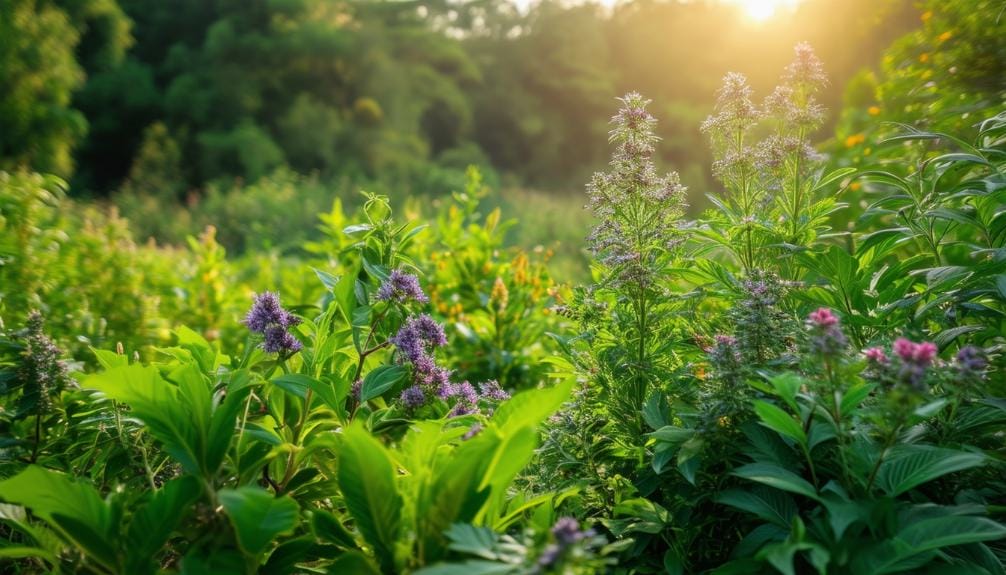
Recognizing the urgency of protecting endangered plant species, researchers are actively exploring sustainable alternatives to traditional essential oil sourcing methods. Instead of decimating wild populations by harvesting entire plants or roots, they’re getting crafty and looking to use renewable plant parts like leaves, bark, or other bits that allow the plant to regrow and reproduce.
Pretty nifty, right?
But that’s not all! Some researchers are even bringing endangered medicinal plants into cultivation, developing proper techniques to meet market demand while taking the pressure off wild populations. It’s like a plant-based farm-to-table movement, and we’re here for it.
And get this – scientists are on the hunt for chemically similar alternatives from plants in the same genus or family as the endangered species. That way, we can swap in a more abundant, sustainable option without sacrificing the good stuff. It’s like a plant version of The Parent Trap – finding a replacement that looks and acts just like the original.
But wait, there’s more! Cutting-edge synthetic biology even allows scientists to biosynthesize valuable plant compounds using engineered microbes. No more relying on harvesting – we can get our essential oils, anti-malarials, and vanilla flavoring straight from the lab. Talk about a game-changer!
With all these innovative approaches, it’s clear that sustainable essential oil sourcing is totally possible. By working together, researchers, industries, and conservation groups can keep our plant friends safe while still satisfying our cravings for that sweet, sweet aroma. Gotta love science!
What Are the Most Sustainable Essential Oils?
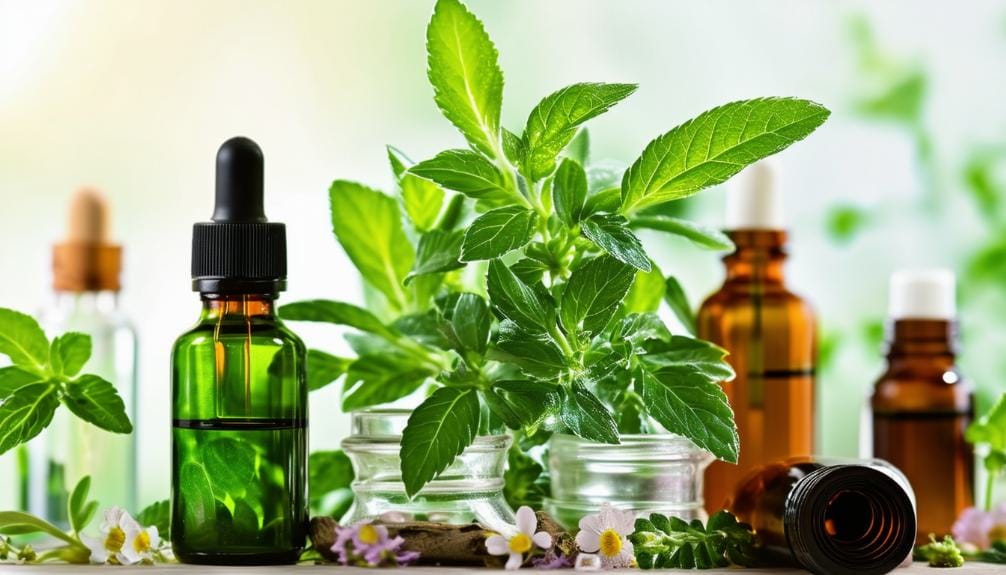
When it comes to essential oils, some options stand out as particularly sustainable choices. Lavender, lemon, eucalyptus, peppermint, and tea tree are among the most eco-friendly varieties, thanks to their abundance, fast growth, and organic cultivation practices.
Lavender is a true champion of sustainability. This hardy, drought-resistant plant can be grown with minimal inputs, and it’s widely cultivated, making lavender essential oil a reliable and renewable resource.
Lemon essential oil also gets a sustainability gold star, as it’s extracted from lemon peels – a byproduct of the juice industry that would otherwise go to waste.
Eucalyptus trees are another superstar, known for their rapid growth and ability to be harvested sustainably for their leaves.
And peppermint? Well, it’s an herbaceous perennial that’s a breeze to grow organically, making peppermint oil a guilt-free choice.
Last but not least, tea tree oil comes from a hardy, fast-growing tree native to Australia, so you can feel good about using it in your DIY concoctions.
Steer clear of oils like sandalwood, agarwood, and rosewood, which often come from overharvested and endangered plants.
With a little research, you can stock up on the most sustainable essential oils and feel good about your choices.
Can You Make Your Own Eco-Friendly Essential Oils?
Yes, you can create your own environmentally friendly essential oils at home by following a few straightforward steps. Whether you require them for crafting sustainable cleaning solutions or as a delightful aromatizer, it’s an enjoyable and fulfilling endeavor.
All it takes is the right plant material, extraction method, and some patience. Whether you’re a DIY guru or just looking to get your hands dirty, homemade essential oils are a fantastic way to create personalized, sustainable blends.
First, gather up your plant material – think fresh herbs, fragrant flowers, or zesty citrus peels. The more you use, the stronger the essential oil will be, so don’t be shy!
Next, it’s time to choose your extraction method. For the classic steam distillation, simply place your plant material in a still, add water, and let the steam do its thing, capturing the condensed, oil-infused vapors. Or, for a more hands-on approach, try solvent extraction – soak your plants in a carrier oil or alcohol for 2-6 weeks, then strain out the good stuff.
And let’s not forget the cold press method, perfect for citrus peels – just pop ’em in a press and squeeze out that liquid gold.
The best part? You get to customize your essential oils to your heart’s content, without any pesky additives. Just remember to store your creations in dark glass bottles and keep them away from light and heat. With a little trial and error, you’ll be whipping up your own eco-friendly essential oils in no time.
Happy blending!

